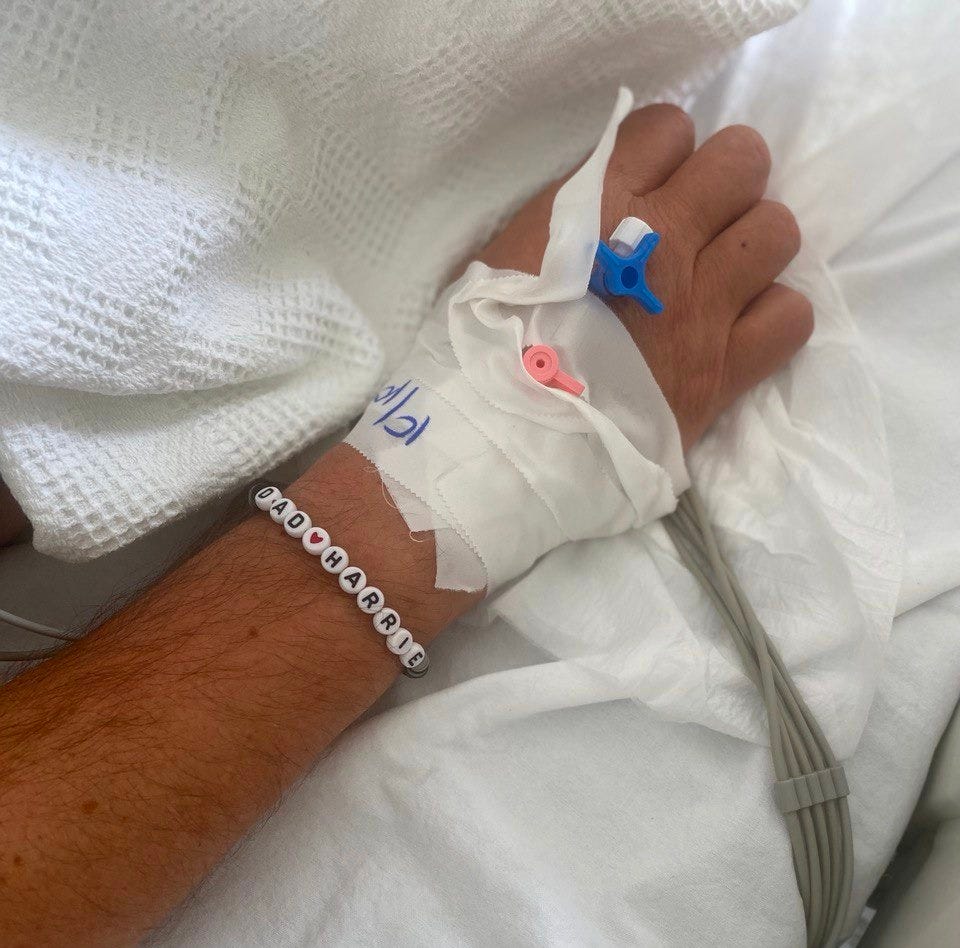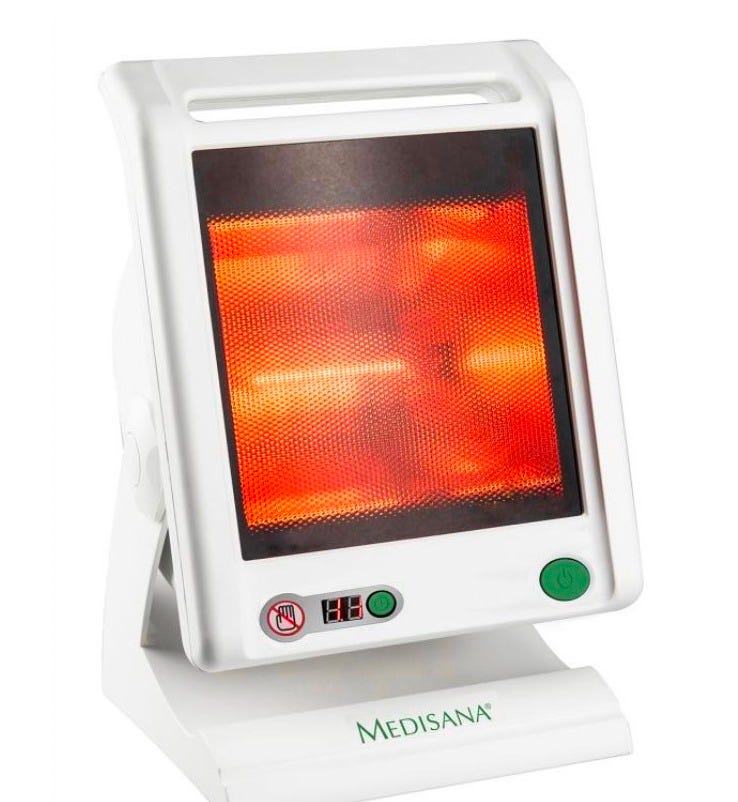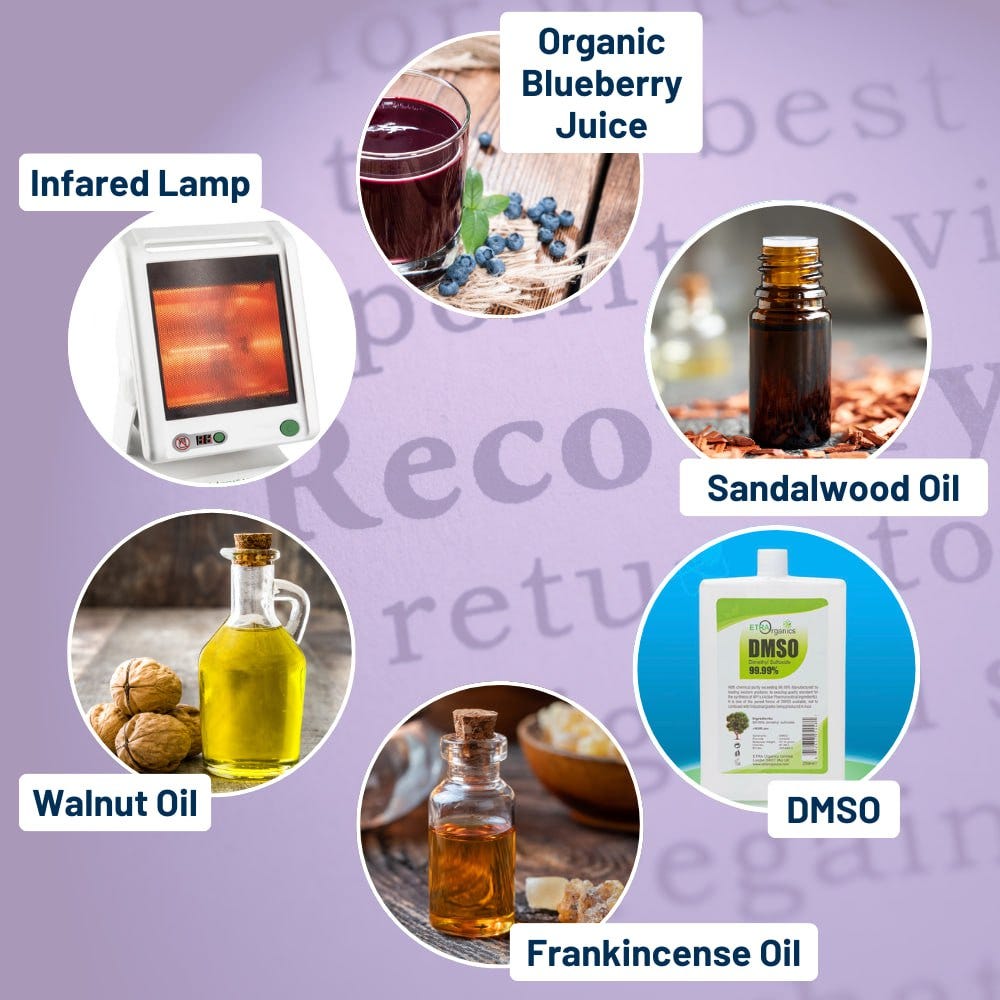They said he'd never recover from stroke. They didn't count on DMSO...
This personal story from WCH team member Lucy shows how natural therapeutic approaches, love and determination work miracles.
Note: The information below is a personal account and does not in any way constitute medical advice.
It’s past ten on a Sunday night and my ex’s girlfriend is calling me. I’m good friends with Jo, but this is unusual. Something is terribly wrong. I’ve feared this moment, ever since Simon took two doses of the experimental Covid vaccine – and now it’s here.
Jo tells me Simon’s had a stroke on a golfing holiday with his friends in Greece. They’d been at a local hotel, raising a glass to their annual tour. Instead of clinking his glass, he’d just stared into space and one side of his face looked different. Within an hour he was in an ambulance and taken to the nearest hospital.
The news is hard to bear: how am I going to tell Harriet, our 13 year old daughter? Her father is the beat of her heart. It’s the middle of the night and I’m looking at her school uniform laid out for the next day, all organised and prepared, just like her father.
“Mask, mask, mask…”
We get on the next flight to Athens. As Harriet sleeps on my shoulder, I pray he hangs on long enough for her to say goodbye.
After a fraught car ride, we reach the rural hospital where we’re accosted by people saying “mask, mask, mask” followed by “test, you must take Covid test, 2nd floor.” I thank them kindly and ignore their request.
From floor to floor we search, our Greek as good as their English. We eventually find him. Lying on a hospital bed with one eye open, he stares at us, confused. His face is swollen and one side doesn’t seem to be working like the other, but we see the recognition dawn: he knows who we are.
He looks in a huge amount of discomfort: the drip that was attached to him is hanging precariously from the crook of his elbow. We sit with him waiting for a doctor, a nurse anyone who can inform us as to how he is. Attention comes only when his drip comes out of his arm and he starts bleeding profusely. Harriet’s cries of horror reach the nurses and they rush to stem the flow.
Hours later, we head to the car for some sleep. We tell Simon we won’t be far and will see him in a few hours. We think he can understand us by the movement of his eyebrow. At this point, I am furiously texting my friends, asking for help. Exhausted, I watch support and information pour in from all over the world.
The power of community
One friend, a doctor, recommends infrared light therapy—a treatment routinely used in stroke wards in Russia that could provide hope for Simon. Buying online is a two-week wait but a friend’s friend in Athens arranges for a device to collect the following day.
Another text arrives, this time from a nutritionist friend who tells me Simon should be taking DMSO, a natural substance with far-reaching, proven results. I have some at home, so arrange for Simon’s partner Jo to bring it with her.
The next day brings fresh horror. When Jo arrives, she sees immediately the hospital is sorely overstretched but when we ask to move Simon elsewhere, the doctors refuse. It’s only when we speak to the insurance company that we discover why. The insurer translates what the doctors had been trying to communicate in the two-minute exchange we’d had with them: that Simon’s condition is too poor for him to moved, and that the stroke is so severe, he will never recover.
The hardest thing I’ve ever done…
My heart breaks yet again and thoughts rush in. He can’t die in this place… how do I fly his body home? How do I tell Harriet her beloved dad, her hero will never be the same again? I break down. With Harriet next to her dad unaware of the news, Jo and I sit on the bench outside the ward and cry.
When I make my way back to Harriet, she asks me if he’s going to be ok. I know the importance of energy and how it heals the body. I know that if her energy dips with lost hope, he’ll absorb this and it’ll be downhill from there. I do the hardest thing I have ever done as a mum. I look her in the eyes and say, “He will be ok, angel.” She asks me to promise, and I do. I can’t let her give up hope; by my saying those words out loud for Simon to hear, I know this keeps the positive energy alive for him too.
Determination sets in. I have promised this to my beautiful daughter so now I must manifest his recovery and make a miracle happen. We’re not just leaving him in the hands of Big Pharma and hospital staff who don’t know any better – we’re going to help him in our own way.
Another message has arrived from a colleague whose friend had healed from stroke. She suggests we give Simon essential oils of frankincense and sandalwood - how on earth am I going to find these? The answer comes quickly. My new Athenian friend messages to say she’s collecting the red light device in a few hours. I ask if she can help me locate the oils. “Of course, no problem!” she replies.
Locked out of the ward that night (despite attempting the fire escape), we set to work at dawn the next day.
Our alternative treatment begins…
I start by setting up the red light, pointing it about 30cm from his head and letting it run its set time of 15 mins. Simon’s partner Jo and the Greek staff look perplexed.
Then I set to work on the essential oils. The combination makes the toxic chemical hospital smell disappear and it smells like a spa. Simon is now showing little signs of improvement, using his good hand to open his eyes. He can hear us as he raises an eyebrow now and then when we try to tell him a joke. As the day goes on, I move the lamp around his head so that all areas absorb the light.
The nurses are confused. “What is this?!” they ask.
I tell them it’s to help with blood flow to his brain. They shrug, not disapprovingly but with curiosity.
Later, after doing some more research on DMSO, I decide to give it a go. As he’s still nil by mouth, I pour 99.5% DMSO onto my hands and apply it to his forehead and temples. After more research I learn magnesium oil helps too. The local pharmacy sells a magnesium gel so I think, why not? It’s got to be better than none at all.
Progress!
As the day progresses, Simon shows more improvement. His eyes are opening without his fingers doing the work and he’s even able to give us a slight smile. We continually tell him to keep trying, that his mindset will do all the work, that he just needs to believe he will get better.
The hourly routine continues: DMSO, essential oils, red light. We get strange looks but no one tries to stop us.
We see a doctor, a rare sight.
She seems surprised that he is doing so well. He is now nodding occasionally, opening both eyes together, and he’s more responsive. Great! Any progress is a most welcome sign! Is it the additional therapies he’s receiving from us, I wonder?
The unmasked speech therapist that arrives also sees improvements each day. He becomes able to say yes, no, right so far. Over the following days, we continue with the red light and DMSO – when I give him the DMSO mixed with orange juice, the improvements pick up even more.
I learn that blueberry juice and walnut oil can help, so start giving him sips of blueberry juice through the day, and walnut oil-soaked bread, which he’s now able to eat in small bites. I know sound frequencies are important and learn that 528hz can help stroke victims. I find a track on YouTube and play it to Simon as he sleeps.
Jo, Harrie and I take it in turns to be by his side. We hear a new word each day and he can even hum a song and say some of the words to his beloved St Helen’s rugby league tune ‘When the saints go marching in’. Harriet beams from ear to ear.
Then the news comes: we are going home! A medical flight has been arranged just three weeks after the stroke we were told he would never recover from. To think at one point I didn’t think he’d make it back alive.
The triumph of love, hope and connection
Now as I sit with my daughter on our flight back from Athens, I am overwhelmed by the resilience of the human spirit and the power of hope. What began as a nightmarish ordeal became an incredible testament to love, determination, and the healing potential that lies within and around us.
Navigating the chaotic landscape of modern medicine, I discovered that true healing often transcends traditional practices. It flourished in the connections we forge with supportive friends, colleagues, and even strangers who stepped in to offer their kindness and expertise. This experience reinforced my belief in the importance of community—how coming together in times of crisis can create a tapestry of support that uplifts and empowers us.
Through the storm of uncertainty, I learned to trust not only in nature’s ability to heal but also in my own capacity to advocate fiercely for my loved ones. I witnessed firsthand how combining conventional and alternative approaches could lead to remarkable progress, and I am filled with gratitude for the wisdom shared by my friends and colleagues. Their encouragement and guidance became a lifeline during our darkest hours.
As we prepare to embark on the next chapter of Simon's recovery, I am hopeful.
Miracles can, and do, happen
The journey ahead may still be fraught with challenges, but I am confident that with love, persistence, and the right resources, miracles can happen. This experience has solidified my commitment to championing holistic healing and advocating for those who may feel voiceless in the face of modern medicine.
Thank you to everyone who has walked this path with us—your support has made all the difference. Together, we can continue to share knowledge, foster healing, and create a world where compassion and understanding triumph over fear.
Resources
On DMSO, A Midwestern Doctor has a fascinating and informative series on Substack, starting with the link below:
There are several studies on red light therapy as a treatment for stroke, including this clinical trial, this 2016 study, and this article that references research on the positive therapeutic effects of red light therapy for stroke patients.
On blueberries as a therapeutic treatment for stroke: https://pmc.ncbi.nlm.nih.gov/articles/PMC11203670/
On blueberries and walnuts and their role in treating stroke: https://www.sciencedaily.com/releases/2007/11/071106122843.htm








Great article! Thanks for sharing.